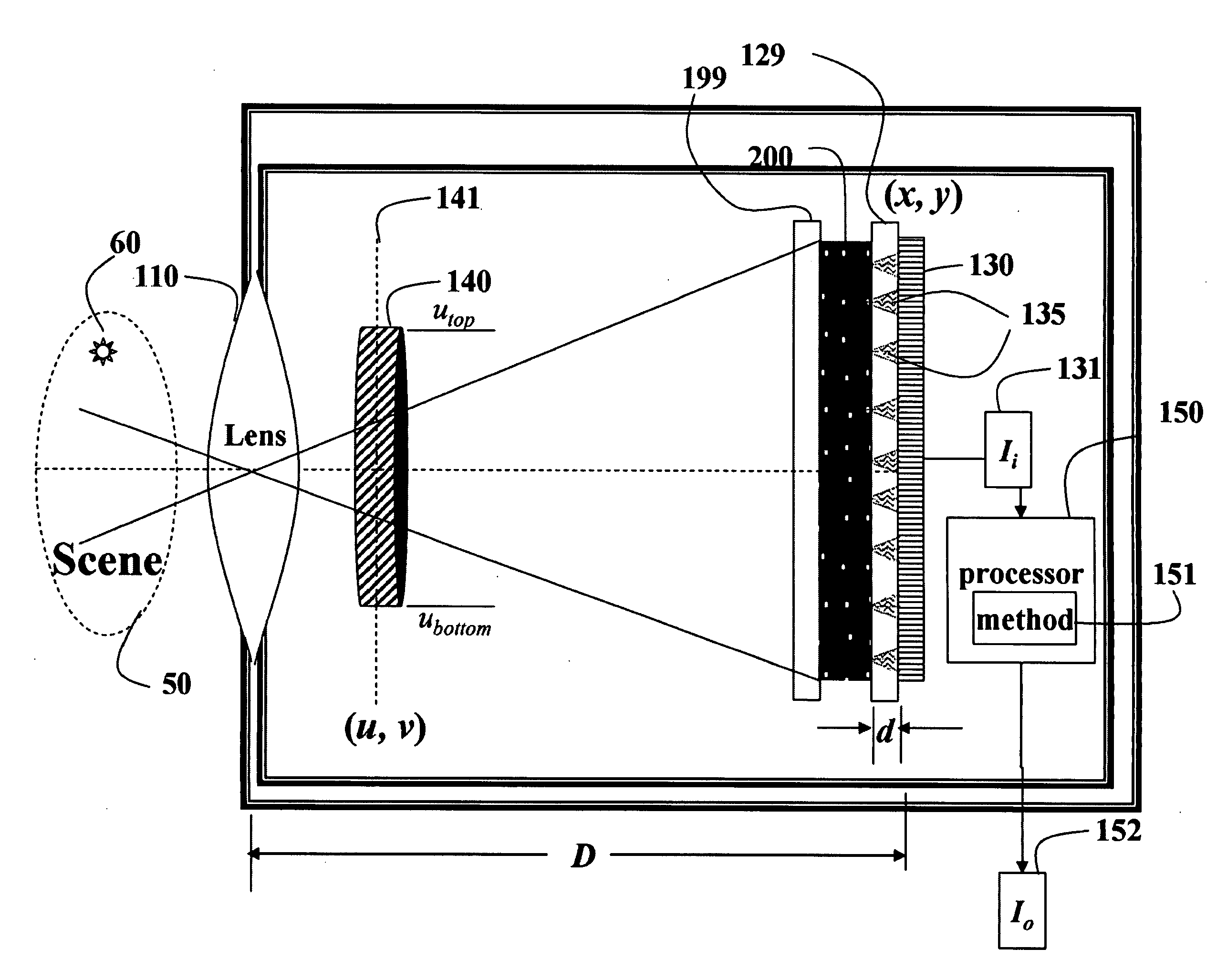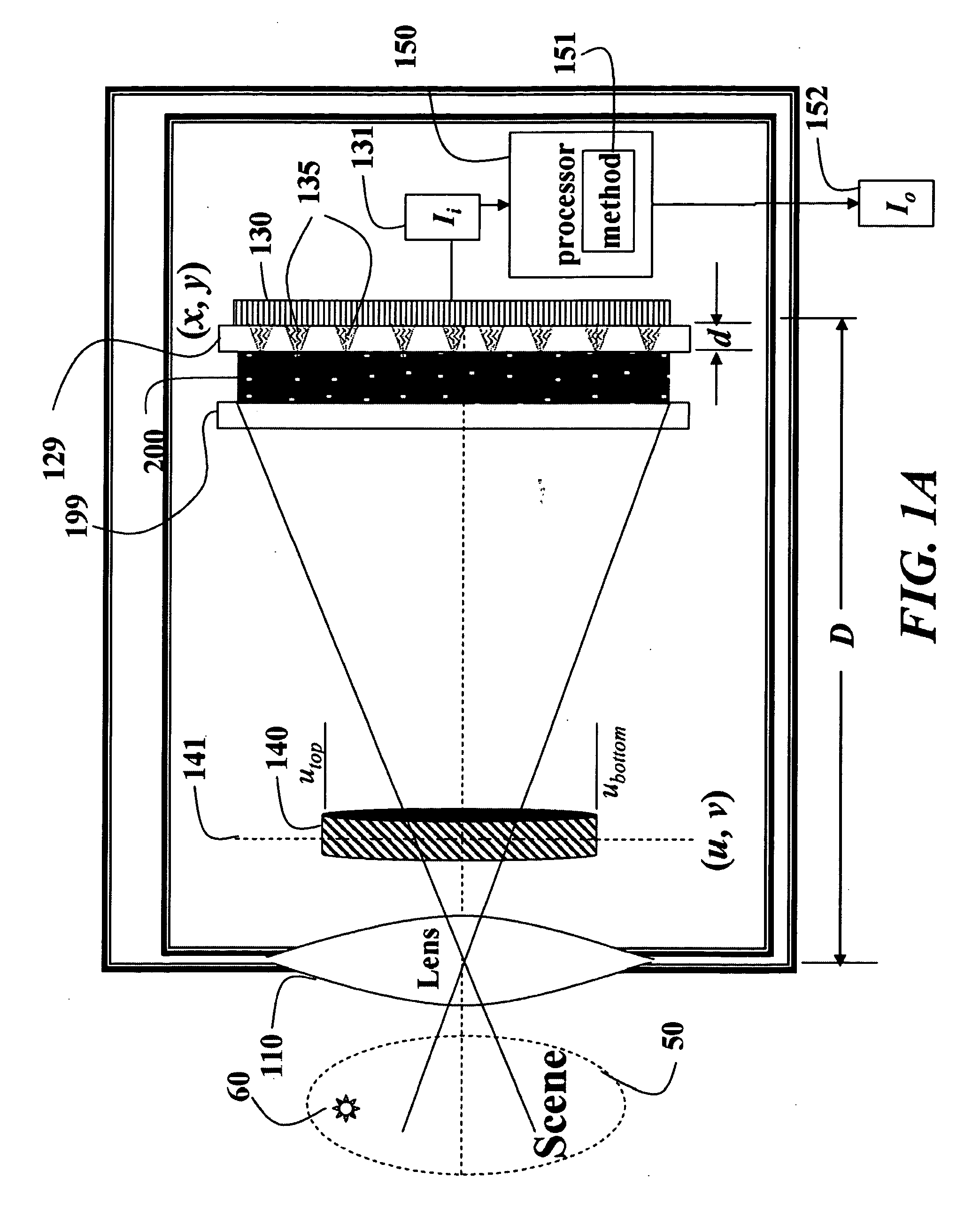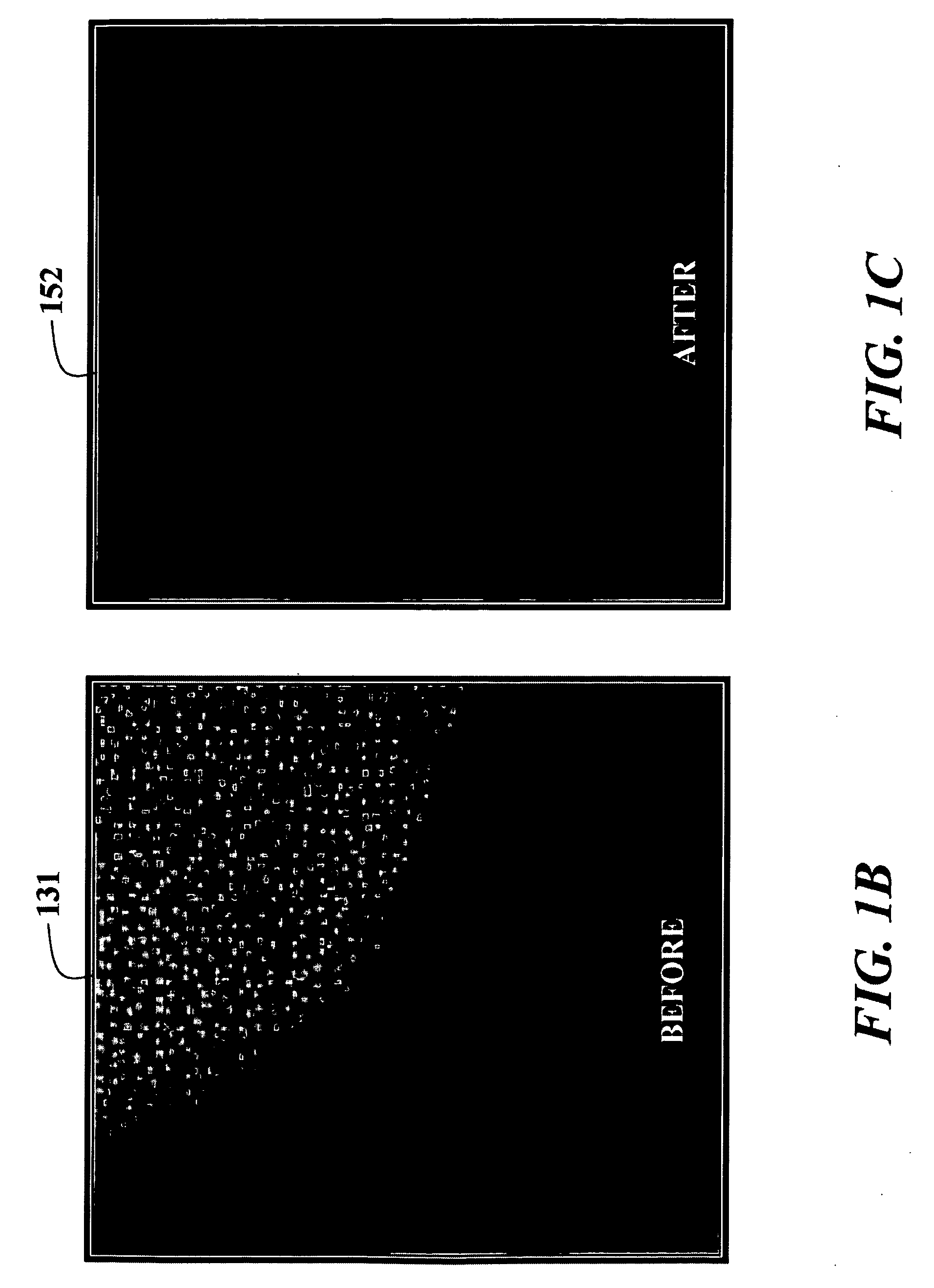Apparatus and Method for Reducing Glare in Images
a technology of glare reduction and images, applied in the field of computational photography, can solve the problems of reducing image contrast and glare, and achieve the effects of reducing glare artifacts, reducing image contrast, and reducing glar
- Summary
- Abstract
- Description
- Claims
- Application Information
AI Technical Summary
Benefits of technology
Problems solved by technology
Method used
Image
Examples
Embodiment Construction
[0021]Camera
[0022]FIG. 1A shows a camera 100 for reducing glare according to an embodiment of our invention. The camera acquires an input image 131 of a scene 50 including a bright light source 60. The camera includes a lens 110, a high-frequency mask 200, and a sensor 130 having sensor pixels. The mask is placed at a distance of about 1.2 mm from the sensor and coplanar with the sensor. The camera can also include an aperture 140. The sensor is coupled to a processor 150, which processes the input image Ii 131 acquired by the sensor using our method 151. An output image I0 152 has reduced glare.
[0023]FIGS. 1B and 1C dramatically shows the before and after effects of our invention. As shown in FIG. 1B, the glare is evident as isolated bright pixels due to our mask with randomly placed pin-holes. The glare pixels have clearly been separated from the rest of the image. These pixels can now be easily be identified as being ‘outliers’ using some thresholding technique, and replaced usin...
PUM
 Login to View More
Login to View More Abstract
Description
Claims
Application Information
 Login to View More
Login to View More - R&D
- Intellectual Property
- Life Sciences
- Materials
- Tech Scout
- Unparalleled Data Quality
- Higher Quality Content
- 60% Fewer Hallucinations
Browse by: Latest US Patents, China's latest patents, Technical Efficacy Thesaurus, Application Domain, Technology Topic, Popular Technical Reports.
© 2025 PatSnap. All rights reserved.Legal|Privacy policy|Modern Slavery Act Transparency Statement|Sitemap|About US| Contact US: help@patsnap.com



